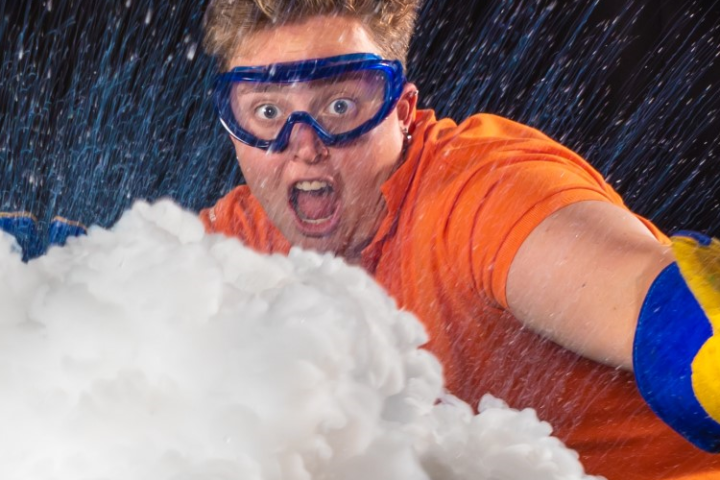
Questacon – The National Science and Technology Centre has partnered with Raytheon Australia to inspire and engage secondary school students with 3D design and printing.
Over the past three months, Questacon’s 3D Design Virtual Excursion saw 46 students from schools in Western Australia, the Australian Capital Territory and Victoria use 3D design and printing to create body parts for a figurine.
The students participated in interactive videoconference workshops connected through Questacon’s Schmidt Studio, and an online network, to share progress on the task, and were guided by Questacon facilitators and Raytheon mechanical engineer, Dallas Roderick.
Parliamentary Secretary to the Minister for Industry and Science Karen Andrews said “This Questacon project has given 46 lucky students a first-hand look at an emerging technology that has the potential to revolutionise manufacturing worldwide,” Mrs Andrews said.
Mrs Andrews acknowledged key partner Raytheon for their support in delivering the programme—one of a series of programmes supported under a three-year partnership between Questacon and Raytheon.
“This unique initiative is an example of how government and industry can collaborate to bring tangible examples from business and research, and inspire young people to become the innovators of tomorrow.”
Raytheon Australia’s managing director, Michael Ward, said programmes such as 3D Design Virtual Excursion are crucial to inspire Australia’s next-generation of scientists and engineers. “It is vital we encourage and provide every learning opportunity and resource to aid their development. On behalf of Raytheon, I congratulate these students on the innovation their designs reflect and wish them all the best for their future studies,” Mr Ward said.
Questacon’s Director of Science and Learning, Dr Stuart Kohlhagen, commented on how such projects impact on the learning experience and on students’ future interest in science. “Additive manufacturing, including 3D design and printing, is revolutionising manufacturing across many industries worldwide. This project has given students an insight and hopefully motivated them to find out more about the increasing application of this technology and potential careers on offer,” Dr Kohlhagen said.
“These students have had the opportunity to explore design, engineering and modern manufacturing techniques. They’ve gained practical skills and experience in computer-aided design and manufacturing, measurement, geometry and communication.
“Importantly, they’ve also experienced the process of innovation; that the path of turning ideas into reality often requires perseverance and creative problem-solving.
“These are important skills—not only for life—but also foundation skills for careers in science, technology, engineering and maths (STEM).”
The groups were provided with a torso with snap-in sockets and a blueprint ball-joint design to build upon. Using 3D design and printing, the teams created heads, arms, legs and even wings for the torso to complete the figurine. Schools were able to set their own parameters for the challenge, such as creating functioning limb prototypes for amputees.
“All of my students valued the open-ended nature of the task and relished the opportunity to explore the possibilities of prosthetics or robotics. Designing the parts to be 3D printed was a great incentive for the students to challenge themselves, and the extra challenge of creating captured or movable parts allowed differentiation of ability levels,” Marist College Canberra teacher Dean Moran said.
Projects such as 3D Design Virtual Excursion support the vision for an Australia where the next generation of scientists and researchers is created by nurturing talent and scientific interest, and where industry and science work together to identify and respond to challenges, create and capitalise on new ideas, new products and new ways of doing things.
Mrs Andrews said Questacon’s initiatives are a key part of the delivery of the Government’s broader science agenda, including the development of Australia’s first ever national policy to secure Australia’s skills base in STEM. “These informal learning opportunities are a vital part of the broader STEM policy we are developing to help secure a highly skilled workforce and cultivate the science literate society that is essential for Australia’s ongoing productivity and prosperity,” Mrs Andrews said.
For more information about the Questacon’s 3D Design Virtual Excursion visit www.questacon.edu.au



